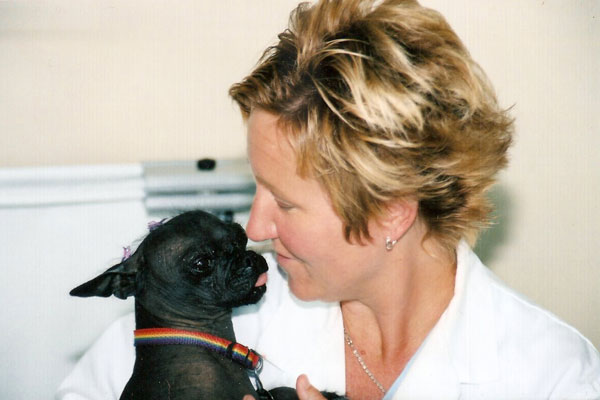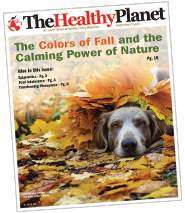
By Teresa Garden, DVM
Spring has sprung! It’s been another long dreary COVID winter and most of us are ready to break out of our hovels and have some fun. Our pooches probably feel the same! Spending time outdoors with our dogs can get both man and dog into better shape physically and mentally. All of us may benefit from walking, jogging, or hiking with our furry friends.
Fifty percent of our dogs are overweight or obese. So remember to start off slow with any exercise… even walking. If your dog is older or out of shape, start with short walks on flat level terrain. Try daily walks and slowly increase the length of your walks. Later, add in some hills. Walking in the morning or at dusk can help avoid the extreme temperatures of our St. Louis summers. Check the temperature of the walking surface. Remember, asphalt can get extremely hot and dangerous. It can burn footpads. Try applying some pressure to the asphalt with your hand. If it’s too hot to hold your hand on it for several seconds, it is too hot for your dog to be walking on it! Concrete will be a little cooler and grass or dirt paths are always a safe temperature. Walking in the shade rather than the sun can avoid over heating. Harnesses may be preferred over collars for better control and to alleviate pressure on the neck. And don’t forget the flea and tick preventatives. Many areas have fleas and are populated by deer, which carry ticks. Last, but not least, bring the dreaded poop bag and clean up after your dog. Not only are you being a conscientious neighbor, but you are helping to prevent the spread of disease to pets and people!
Jogging is another exercise some pet owners would like to do with their dogs. Not all people are fit for jogging. Same with dogs. Check with your veterinarian to see if it safe to take your dog jogging. If your dog has any disease, injury, or abnormality affecting bones or joints jogging may not be a suitable activity. Some dogs are too small to keep up with a human. And some just aren’t built right for jogging. The brachycephalic breeds ( Bulldogs, Boston Terriers, Pekingese, ShihTzu, Pugs) do not have an efficient way to breathe even at rest. They certainly cannot dissipate enough heat through panting to keep themselves cool while on a run in summer heat. Chondrodystrophic breeds are also not suitable jogging partners. These breeds include Basset Hounds, Dachshunds, and Corgies. What is a suitable canine jogging partner? In general, dogs with long noses and long legs and a lean body build with no orthopedic, cardiac, or respiratory problems may enjoy a little run with their favorite human.
Jogging is a strenuous exercise. Starting slow is key and training is essential. Alternate walking with jogging at first and slowly increase distance and time. Allow time for active recovery and for panting to ease. Remember, dogs can only dissipate their heat through panting. They do not have sweat glands like us. Running on dirt trails is easier on your dog’s joints and paws. Make sure your dog is well behaved and will obey basic commands such as sit, stay, and leave it. This will keep you both safer when encountering bikes, strollers, traffic lights, other dogs, and people. Make sure to carry enough water for you and your dog especially in hot weather. Not only does your dog need to drink, you may need to apply water to his head and paws to help cool him off. Running at dawn or dusk is safer than midday and shade is safer than sun. Using a 4 to 6 foot leash is best for everyone’s safety. Check paw pads after a run. Make sure there are no cuts or foreign bodies in the pads. Rest and warm up are important. Walk and then trot prior to your jog. Trot and walk after the jog to cool down. Massaging muscles after exercise can decrease lactic acid build up in muscle fibers. Cool down completely before offering food or treats to your pet to avoid stomach upset.
Hiking can be a very enjoyable experience to share with your canine friend! We are fortunate that trails in our area are at sea level and many are fairly level. This bodes well for 2-legged and 4-legged beginners. Gear you will need includes water bottles for people and pets with collapsible bowl, map, compass, fully charged cell phone, poop bags, harness, 4 to 6 foot leash, and first aid kit. Your first aid kit should include bandaging material, Benadryl, and antiseptic spray or cream. Flea and tick medication should be applied to your dog prior to your hike. Spring and fall weather make for ideal hiking. Monitor weather conditions for possible thunderstorms or darkness. Try to match the duration and length of the hike to your dog’s level of general health and athletic ability. Trails rated a good match for hiking with children will work well for most dogs. Check to see if dogs are allowed to walk on the specific trail you have chosen. Follow leash laws. Most trails require dogs to be on leash. Stay on the trail to avoid injury to your pet as well as to protect wildlife and fragile vegetation. Trails must be shared with others so it’s always a good idea to keep your dog close to you when hiking. Do not allow your pooch to drink from ponds, puddles, creeks or streams. They can harbor organisms causing infectious diseases such as Leptospirosis and Giardiasis. Monitor your dog periodically throughout your hike for limping, cuts, splinters, or overheating.
The joys of being outside and enjoying nature are boundless. Being able to share them with friends human and canine only add to the experience! Enjoy your summer getting fit while spending quality time with your canine friend. May both of you be happy and healthy together!
Dr. Teresa Garden is owner and chief veterinarian of Animal Health & Healing, a full-service holistic and conventional veterinary practice in the Maplewood /Richmond Heights area. www.AnimalHealthandHealing.com. Phone 314-781-1738.


